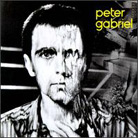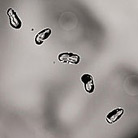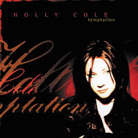![[SoundStage!]](../sslogo3.gif) The Vinyl Word The Vinyl WordBack Issue Article |
August 2003 Found on Vinyl: Peter Gabriel and Holly Cole I’m a sucker for a good pressing. Right from the start, when I was first getting into vinyl in a big way, I realized that there was something special about premium LPs, and I was willing, if not always able, to pay the extra bucks to get them. From the transcendent coolness of the Japanese Obi strip to the overbuilt packaging and rice-paper sleeves of Mobile Fidelity pressings, I was drawn like a magpie to rhinestones by the exotic and the rare. So I guess it comes as no surprise that Classic Records holds both a special place in my heart and a dedicated cubicle in my LP rack. Over the years they’ve reissued an astonishing array of music, ranging from RCA Living Stereo Classics to Blue Note hard bop and Matthew Sweet pop. All of the Classic titles I own are beautifully packaged and great-sounding. For the most part, Classic Records has also evaded the trap that other reissue companies often fall into. Classic chooses titles carefully and avoids narrow-interest audiophile navel-gazers and '70’s rock clinkers. Instead the company concentrates on good-sounding and relevant music. Right now I have in front of me, spread out like religious artifacts, three of Classic’s new Quiex 200-gram titles. These LPs, pressed on Classic’s new proprietary Quiex SVP vinyl, are only 20 grams heavier than the standard 180-gram audiophile pressing, but they certainly seem much thicker. This switch to 200-gram vinyl comes along with the removal of the groove guard and the addition of a deep groove in the center label. These changes, according to Classic Records, allow the LP to better hug the platter for an increase in bass response and midrange clarity.
PG III was Gabriel’s first foray into ethnic music, with African rhythms and instruments featured front and center in tracks such as "Biko" and "No Self Control." In fact, the whole album reaches toward new ideas. Phil Collins’ drum work seems, on the surface, to be competent and tasteful but otherwise low-key. Take note of the cymbals, however. There aren’t any! The complete absence of any ride, high-hat or crash cymbals is most likely a Robert Fripp influence. Fripp despises cymbals of any kind, as they use some of the same frequency range as the guitar, and also contribute towards a busy drum sound, which the little guy isn’t keen on either. The absence of cymbals adds a dark, brooding quality to PG III that complements the somber lyrics and rich, introspective vocals. Once you add in Fripp’s buzzsaw guitar and Tony Levin’s agile Chapman Stick bass, you’ve got a thick musical stew in which you can always find something of interest, which is the recipe for an album that stands the test of time. This is a great recording, and Classic Records has treated it with the reverence it deserves. The 200-gram Quiex pressing is dead flat, glossy and completely silent. There are no ticks or pops, and surface noise is low; my domestic Canadian pressing feels and sounds thin in comparison. The carefully layered sound quality of this album combined with Classic’s superb remastering means that you can now easily focus on a specific instrument and track it easily while still enjoying the sound of the whole group. I’d always felt that there was more to PG III than I could glean from the dark, muffled sound of the domestic pressing and the regular CD, and now, thanks to Classic’s reissue, I can hear that I was right. The bass is deeper and tighter here, the images now have depth, and most importantly the overall tonal balance of the album now has some life to it. It’s still a dark-sounding album, but it no longer sounds like it was recorded under a blanket. Classic’s packaging job is first-rate too. The gatefold cover is of a much thicker stock than the that of regular pressing, and it has a high-quality look and feel. The inside slip is die-cut, which looks cool, but unfortunately the record tends to hang up on it when you slide it into the cover. As an added bonus Classic has included a full-size photo of the original master tapes, probably just to remind everyone that, yes, they got to use them. Bravo all round.
Take "No Way Out," for instance. On this track, Gabriel combines surfin’ guitar licks with ominous, subsonic bass notes, the end result being a slice of light-heartedness mixed with almost religious doom. However this attempt at cheeriness can’t disguise a core of darkness that underlies both this song and the entire album. Even some of the up-tempo songs, such as "The Barry Williams Show," have a core of cynicism to them that can be a bit disturbing. While this is a clever, well-produced, intelligent album, I find it to be a bit difficult on the repeat listen. Some of the songs lack catharsis, as there’s no resolution to the lyrical and musical questions they pose, and no easing of the emotional tension that they evoke. Lack of catharsis isn’t necessarily a bad thing, though, so long as there’s some letup. The underlying tension of Up, highlighted by David Rhode’s incisive guitar work and Gabriel’s evocative voice, does get broken up by some of the lighter moments of the album. "Sky Blue," in particular, is a calming moment that allows my jaw to unclench and provides a welcome respite. Gabriel has always had a knack for transcribing his demons into music, and he certainly succeeds in beating the listener about the head and neck with this album. The Classic Records version of Up is a double album, with plenty of space between the grooves, so there’s no discernible distortion and blammo dynamic range. Compared to the CD version, which I might add is very good, the LP sacrifices some of the bass impact, substituting instead a richer, warmer sound from the midbass upward. This is a great trade-off in my books, as some of the tracks on the CD sound rather abrasive (not necessarily the fault of the media), and the added warmth of the LP is most welcome. The packaging of Up is superb. As with PG III, the sleeve is die-cut and the materials are a significant step above pretty much any others I’ve encountered. There’s also a 7" 45rpm single included (sans large hole) which contains -- ahem -- "Radio Edits" of "The Barry Williams Show" and "Cloudless." Don’t let the small size and thin profile of this little guy fool you -- it’s one hot tamale, with deep, powerful bass and snappy dynamics. The 45rpm version of "Cloudless" stands out as a beautiful piece of music, sounding much richer and more textured for being remixed. This may actually be my favorite piece of music on the album. To top the whole package off, after I’d finished cursing Classic for not including liner notes, I found them hiding in the 45’s picture sleeve, and they’re bigger and glossier than the CD version's!
Part of the reason for Temptation’s appeal is Holly Cole’s voice. While Tom Waits’ guttural growl is an acquired taste, Cole’s soft contralto instantly appeals. There’s an open, unpretentious quality to her voice that injects wry humor yet refrains from syrupy sentiment. She’s got Ella Fitzgerald’s quirkiness mixed with Julie London’s straight-ahead slink. So imagine how pleased I was to crack open Classic’s double-LP version of this wonderful album. Just like PG III, Temptation is thick, flat and silent. However this LP is much more of a minimalist recording, and as such it dramatically shows off the astonishing sound quality that vinyl can still produce, especially when given the full works, as it has been here. This is one instance where the media sounds just like it looks. The inky black surface of the 200-gram records mirrors the dead-silent soundstage from which the first bars of "Take Me Home" emerge. In fact, on this album the background silence seems even more dense and dramatic than it does with my amplifier muted. Perhaps it’s due to the lifelike dynamics of both Ms. Cole’s voice and the juicy roundness of David Piltch’s bass -- the first bass notes jump out at you with a vivid, round, realistic tone that the CD can’t begin to match. Add in realistic, spacious imaging that also has a much more open sound than the CD, and you’ve got a winner. Whatever. Anyway, my raving is not simply hyperbole. This be the real audiophile deal. It seems rather silly in this digital day and age to describe anything as a revolution in vinyl playback, and that’s true for these Classic Records reissues. Instead, with these records, Classic has shown, in much the same way as JVC did with its XRCD reissues, just how much latent performance is hiding in a technology we’ve become overly familiar with. The old girl’s still got some life in her, I say. Well done! ...Jason Thorpe
|
|
![[SoundStage!]](../sslogo3.gif) All Contents All ContentsCopyright © 2003 SoundStage! All Rights Reserved |
 I first heard Peter
Gabriel III [Classic Records PG3], sometimes known as Melting, 25 years ago
when I was 15 years of age. I loved it then, and I still love it now -- that’s rare
for me, as I tend to look back at my teenage faves with a mixture of horror and amusement.
In my mind, III was a watershed album for Gabriel, as it marked a transition from
his earlier edgy vocals to a richer tenor that I find far more sophisticated and
multi-layered. This album is where he found his voice.
I first heard Peter
Gabriel III [Classic Records PG3], sometimes known as Melting, 25 years ago
when I was 15 years of age. I loved it then, and I still love it now -- that’s rare
for me, as I tend to look back at my teenage faves with a mixture of horror and amusement.
In my mind, III was a watershed album for Gabriel, as it marked a transition from
his earlier edgy vocals to a richer tenor that I find far more sophisticated and
multi-layered. This album is where he found his voice. PG III is
a cohesive, self-contained unit of work. The songs flow nicely into one another and even
the straight-ahead rocking tune "And Through the Wire" fits nicely into the
fabric of the album. Gabriel’s most recent album, Up [Classic Records PG-UP],
on the other hand, is a study in contrasts. At turns it’s brooding and introspective,
then bright and brash, with the different moods at extreme odds to each other.
PG III is
a cohesive, self-contained unit of work. The songs flow nicely into one another and even
the straight-ahead rocking tune "And Through the Wire" fits nicely into the
fabric of the album. Gabriel’s most recent album, Up [Classic Records PG-UP],
on the other hand, is a study in contrasts. At turns it’s brooding and introspective,
then bright and brash, with the different moods at extreme odds to each other.  Holly Cole’s Temptation
[Classic/Blue Note JP5003] is that rarest of albums. It’s an audiophile bon-bon of
the highest order, but it’s also chock-full of musical talent and integrity.
I’ve been happily listening to this collection of Tom Waits songs on CD for a number
of years now, and its combination of great sonics and witty, intelligent music has made it
a long-term favorite in the Thorpe household.
Holly Cole’s Temptation
[Classic/Blue Note JP5003] is that rarest of albums. It’s an audiophile bon-bon of
the highest order, but it’s also chock-full of musical talent and integrity.
I’ve been happily listening to this collection of Tom Waits songs on CD for a number
of years now, and its combination of great sonics and witty, intelligent music has made it
a long-term favorite in the Thorpe household.